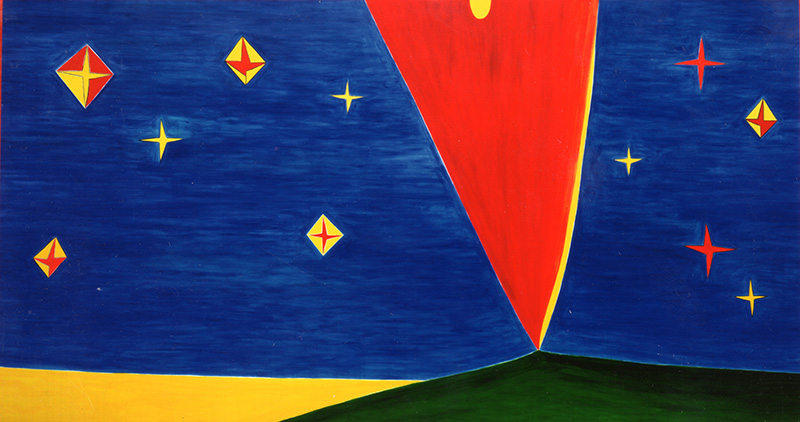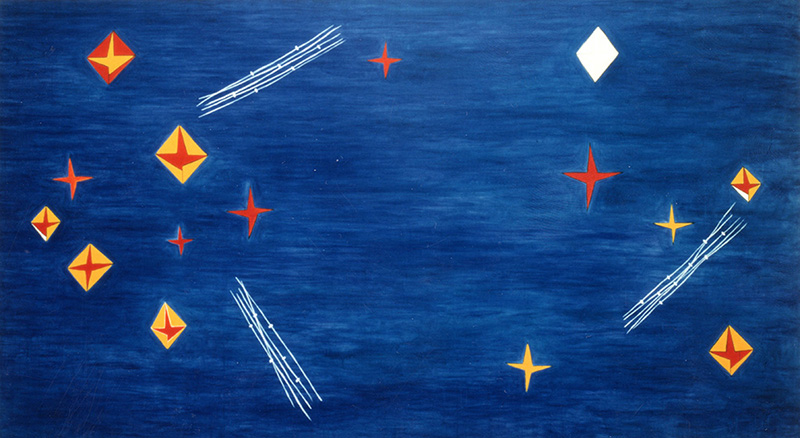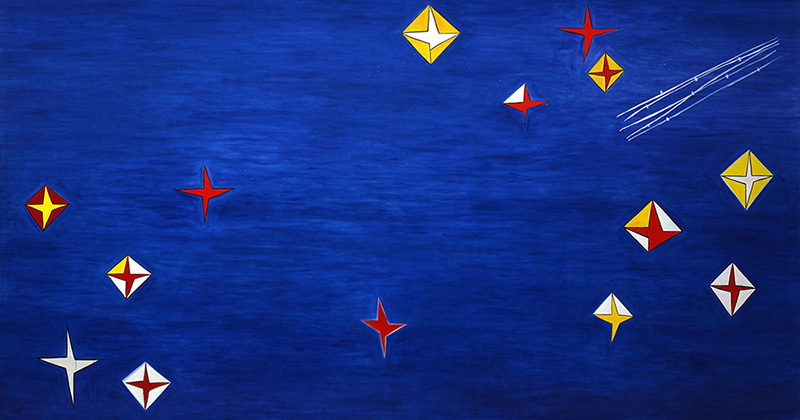ART CITIES:Milan-Nicola De Maria
 In the ‘70s Nicola De Maria moved in Turin where, after a medical degree, he devoted himself to art and he met Mario Merz Marisa Merz, that changed his life and introduced him to the art scene of Turin. His early works are slides depicting rooms and closed doors, as symbols of psychological states. Using the fresco technique practiced by the old masters, in 1977 he made the first mural in Milan, followed by the one for the Paris Biennale of the same year.
In the ‘70s Nicola De Maria moved in Turin where, after a medical degree, he devoted himself to art and he met Mario Merz Marisa Merz, that changed his life and introduced him to the art scene of Turin. His early works are slides depicting rooms and closed doors, as symbols of psychological states. Using the fresco technique practiced by the old masters, in 1977 he made the first mural in Milan, followed by the one for the Paris Biennale of the same year.
By Dimitris Lempesis
Photo: Cortesi Gallery Archive
The opening of Nicola De Maria’s solo exhibition “From the Venice Biennale 1990” inaugurates the launch of the new space of the Cortesi Gallery in Milan. The exhibition brings together the 5 monumental canvases created by De Maria on the occasion of his participation at the Venice Biennale in 1990, and pays tribute to the biennial and the artists who took part in it over the years. Also on presentation are smaller scale historical works, as they were at the 1990 Venice Biennale, and again at the re-showing of the display at the Centro per l’Arte Contemporanea Luigi Pecci in 2012. Alongside Arte Povera, Transavanguardia was one of Italy’s most important postwar Art Movements. The term Transavanguardia which literally means “Beyond Avant-Garde” was coined by the critic Achille Bonito Oliva in his texts for an exhibition he organised in 1979 in Genanzzano titled “Le Stanze”. In “Il Manifesto della Transavanguardia” that was published at the Flash Art n°92-93, Achille Bonito Oliva writes “The Art of the ‘70s finds in its nomadic creativity, its excellent movement, the ability to travel freely within all territories without any foreclosure with open lines in all directions. Artists such as Bagnoli, Chia, Clemente, Cucchi, De Maria, Paladino and Salvadori operate in the mobile field of the Trans-avantgardia, understood as the crossing of the experimental notion of the Avant-Garde, according to the idea that each work presupposes experimental manuality. Artist to a work that no longer builds on the anticipated certainty of a project and an ideology, but forms under his eyes and under the impulse of a hand sinking into matter of art into an imaginary fact, of an incarnation between idea and sensibility”. In the 80’s Nicola De Maria participated at: Venice Biennale (1980 & 1988), documenta 7 (1982), Biennale de Sao Paulo (1981) and at Biennale de Sydney. In 1990, Nicola De Maria was invited for the 3rd time to participate in the Venice Biennale, and exhibited at the Italian Pavilion alongside Giovanni Anselmo, Alighiero Boetti, Dadamaino, Gino De Dominicis, Alberto Garutti, Giuseppe Maraniello, Carlo Maria Mariani, Vettor Pisani and others. The curators, Laura Cherubini, Flaminio Gualdoni and Lea Vergine, assigned one entire room to each of the artists: in his, De Maria realised an immersive intervention, where flat fields of colour drowned the walls of his room in yellow, red, blue, orange, violet and green, and on which he installed the five large-scale canvases on view at Cortesi Gallery in Milan. “The Teste Orfiche” (as the artists titled them, numbering them from I to V) are each 3-metres in height and some measure over 5-metres in width. The works recall geometric shapes, natural landscapes, imagined starry skies and, at the same time, the visual suggestions of a musical score. With their chromatic ‘violence’, these works involve and encompass the viewer in an endless space of colour. They thrive on a peculiar light that comes from within, rather than form the outside, an effect achieved by De Maria through his use of natural pigments in a return to the primal techniques of painting.
Info: Cortesi Gallery, Corso di Porta Nuova 46/B, Milan, Duration: 3/5-21/7/17, Days & Hours: Mon-Fri 10:00-18:00, www.cortesigallery.com


